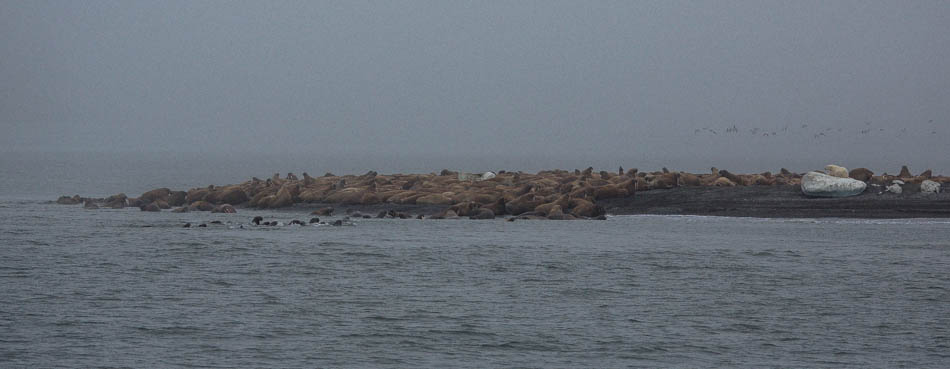A WWF-led research team, a Canon photographer, and crew are traveling to Siberia’s Arctic coast on the Laptev Sea, to help solve a scientific mystery. The Laptev Linkages expedition is sponsored by Canon.
We are heading out in the mist after an overnight stop at the larger Beigihevs island. More and more seabirds are passing the boat – a sign that we’re entering richer seas.
After a few hours we see a sandspit at distance. Yes! a few walrus, no more than maybe 30 individuals. YES! there are more than 400 of them, and in the middle, on a small piece of ice, is the king — a fat male polar bear. It is like sitting in a smorgasbord.
We are now 50 km south of Maria Pronchistcheva Bay. We will head up to the bay before deciding where we should camp. We have found the Laptev walrus, and the work can soon begin.
– Tom
What’s a haulout?
Walruses sometimes congregate in large numbers on land – this is called a “haulout”. In some areas where sea ice levels have decreased, we are seeing extremely large haulouts as the walruses abandon the ice and head to shore. On a previous trip through the Russian Arctic in 2009, WWF researchers encountered an enormous haulout of about 20,000 individuals. This is what it looked like:

